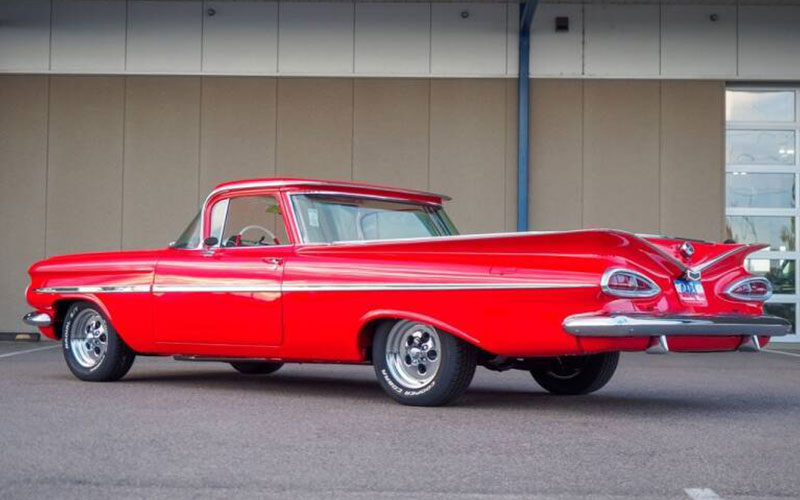Cool Car Find: 1959 Chevrolet El Camino
The Chevy El Camino began with equal parts aesthetics and utility. We highlight the classic 1959 model for its stunning good looks.
More than a Mullet

1959 Chevrolet El Camino – carsforsale.com | Shop Chevrolet El Camino on Carsforsale.com
The Chevrolet El Camino has taken more than its fair share of ridicule. The dual identity of being both a car and a truck have many referring to it as an automotive mullet, as in “business in front and party in the back.” With its popularity among the mullet sporting set, it makes a certain amount of sense the El Camino would get such a reputation. But there’s a lot more to the El Camino than Winston-smoking carnies and “fun” uncles with crippling alimony payments. The early El Camino was as high on style as it was on utility while the later El Camino because an outside-the-box muscle car legend.
Indeed, when it first appeared, Chevy declared El Camino “the most beautiful thing to ever shoulder a load.” If we step back and consider today’s Cool Car Find, a jaw-dropping first-year 1959 El Camino, that marketing spin does not seem far off the mark. Below we’ll look back at the all too brief first generation of the El Camino and highlight the details that make it such a striking classic today.
First Year, Best Year

The Chevrolet El Camino arrived for the 1959 model year, largely as a response to the success Ford was having with their own car/truck hybrid, the Ranchero. The idea for such a vehicle was not new, however. Such “utes,” or utility vehicles, dated back to the 1930s in Australia.
For its first year, the El Camino did a lot of borrowing. It took its underpinnings from the two-door Brookwood station wagon and its body from the Impala. The latter influence made the El Camino, ostensibly a “utility vehicle,” quite an attractive car with flamboyant rear wings and distinctive teardrop taillights. Note too the forward leaning a- and b-pillars, subtly canted roof with rear overhang, and the wrap-around windshield.

The first generation El Camino featured three engine options. The first, a 235 cu-in straight-six, and two V8s, a 283 cu-in and a 348 cu-in. These were then paired with either the two-speed Powerglide automatic or either a three- or four-speed manual. Payload for the El Camino ran from 650 to 1,150 lbs. depending on the engine and suspension set up. The bed was Chevy’s first to be done in steel rather than wood and measured 33 cubic feet.
The ’59 El Camino looked great and sold decently in its first year of production, outselling its rival Ford Ranchero. So naturally, Chevy gave it a redesign for 1960. This mainly involved a facelift from the prior year’s Impala to that year’s Bel Air. Sales dropped by fifty percent, from 22,246 to just 14,163. This time the Ranchero sold better, mostly due to a lower sticker price facilitated by its jump to the Ford Falcon platform.

The dip in sales resulted in the El Camino’s cancellation after the 1960 model. But after a three-year hiatus, Chevy decided to bring back the El Camino which continued to evolve from 1964 through 1980, with a fresh look each year. The mercurial El Camino shifted toward performance with the advent of the muscle car craze with the release of the 1968 El Camino SS.
This Cool Car

1959 Chevrolet El Camino – carsforsale.com | Shop Chevrolet El Camino on Carsforsale.com
Jumping back to that initial year, when the El Camino was at its most aesthetically pleasing, we have our Cool Car Find, a red 1959 example in superb condition top to bottom and inside out. Under the hood is a 350 cu-in V8 crate motor sending power to a three-speed automatic transmission. The restoration on this car is immaculately executed, from the chrome and upholstery to the engine bay and undercarriage. This example happens to have the rarely optioned Level Air suspension, for an extra smooth ride. This, the ultimate El Camino, is listed for $89,900.









